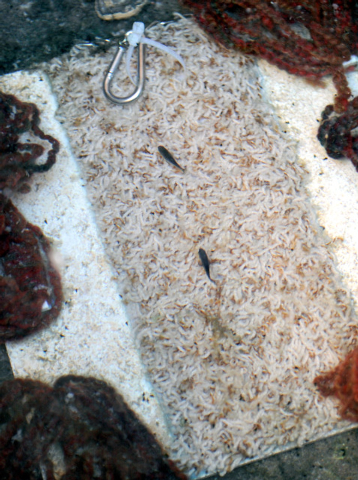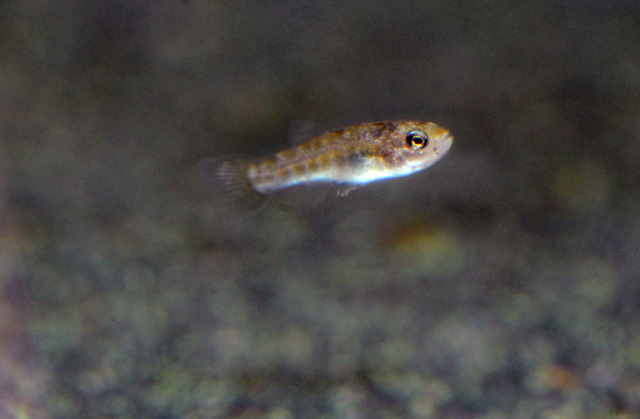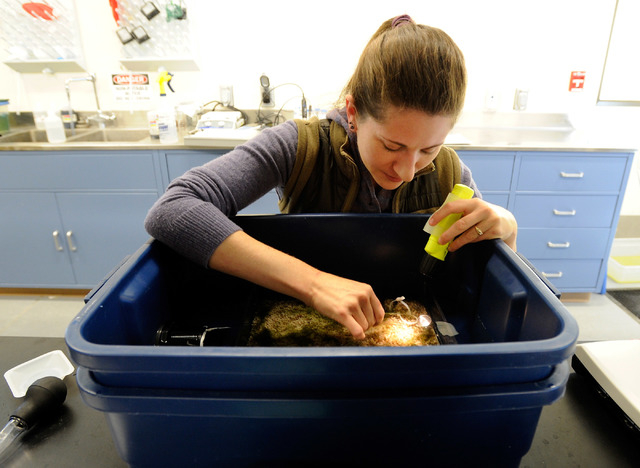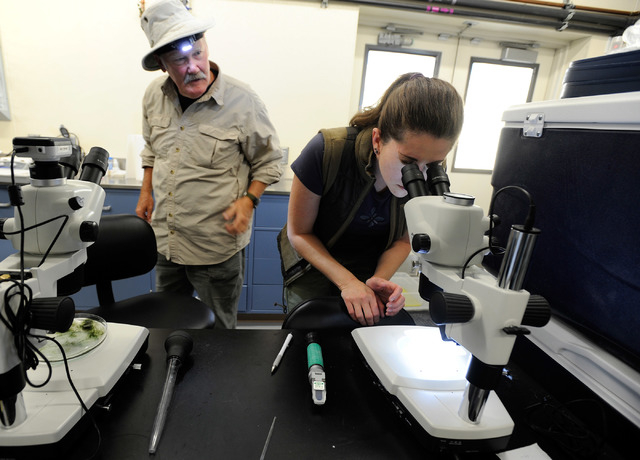Endangered pupfish make small strides with lots of help





One of the world’s most endangered species took a small step away from oblivion over the past year, as the wild population of Devil’s Hole pupfish nearly tripled and researchers made strides on a captive-breeding program.
But with fewer than 100 of the tiny fish left in the only known habitat on Earth — a single water-filled cavern in Nye County, about 90 miles west of Las Vegas — no one is popping champagne just yet.
Extinction remains a very real possibility for the pupfish, which has been under federal protection since 1967.
The official spring count, conducted last month, showed 92 fish. In September there were 65, and in April 2013 there were 35, the lowest total since regular counting began more than 40 years ago.
Experts can’t explain the sudden population spike with any certainty, but man-made improvements to the pupfish diet and habitat could have something to do with it.
The fussed-over fish now receive supplementary feedings five days a week, and they have some new places to hide thanks to the addition of artificial “plants” made from sterilized shag carpet and clumps of yarn. The additions provide cover for young fish and eggs that might otherwise fall prey to the adults.
Meanwhile, less than a mile away from Devil’s Hole, researchers at the new $4.5 million Ash Meadows Fish Conservation Facility are trying to establish a viable, captive-bred population for the first time.
Using just a few dozen eggs painstakingly collected from Devil’s Hole, aquaculturalist Olin Feuerbacher and his team have successfully hatched and raised 29 pupfish to adulthood. By as early as next week, they hope to begin hatching a second generation of captive-raised fish from their original crop of eight females and 12 males, now six months old.
“We’re actually seeing quite a bit of spawning activity,” Feuerbacher said.
Since people started paying attention to the fish, there have never been very many of them. The population peaked at 544 in the fall of 1990 but began to decline in 1996 for reasons researchers still can’t explain.
Today the species is studied and monitored relentlessly by a team of protectors that includes the National Park Service, U.S. Fish & Wildlife Service and Nevada Department of Wildlife. Devil’s Hole is guarded by chain-linked fence, barbed wire and a sophisticated security system that provides 24-hour video surveillance. The cameras and alarms are linked to the outside world by a microwave dish on a tower above the spring-fed cavern, which is widely considered the world’s smallest habitat for a vertebrate species.
Water in the hole is thermally heated to about 93 degrees and carries barely enough dissolved oxygen to support life. At the surface, the pool is about 8 feet wide and 60 feet long, but the cavern angles down into the groundwater table to an undetermined depth. Divers have been as deep as 435 feet without finding the bottom.
Pupfish are known to go as far down as 100 feet, but they spend most of their time on the shelf near the surface, which brings another strange phenomenon into play: Distant earthquakes, some as much as 1,700 miles away, occasionally cause water in the pool to slosh back and forth, dislodging algae and disrupting the pupfish’s natural food supply.
One such “desert tsunami” was caught on camera in 2012. It happened again in March, when an earthquake struck off the California coast, and then in mid-April, when a powerful quake rocked southern Mexico.
Luckily, Feuerbacher said, the quakes came at a time of year when the pool receives enough direct sunlight to fuel new algae growth.
Starting later this month, the team at the research facility plans to move the first pupfish into an exact replica of Devil’s Hole, which was built inside a semi-open structure designed to provide the same seasonal variations in sunlight and weather. The goal is to establish a self-sustaining, back-up population in the 100,000-gallon tank filled with water pumped from the same aquifer that fills Devil’s Hole.
At the moment, though, Feuerbacher’s biggest challenge is keeping his eggs and newly hatched fish larvae from being cannibalized, a common behavior both in aquariums and the wild.
“Generally speaking, most fish have pretty terrible parenting skills” and Devil’s Hole pupfish are no different, he said. “I don’t think they know they’re endangered.”
Contact Henry Brean at hbrean@reviewjournal.com or 702-383-0350. Find him on Twitter: @RefriedBrean.












